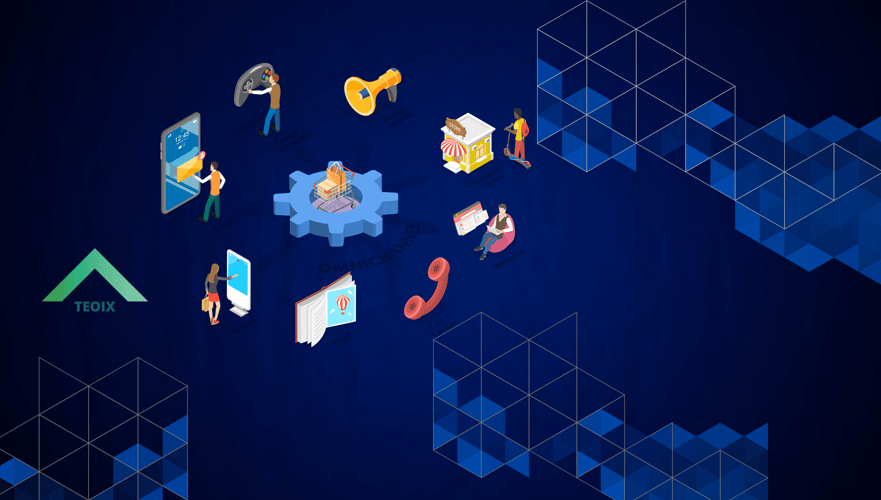Omni channel Retailing: Creating a Seamless Shopping Experience
BLOGS
5/25/20243 min read


Omnichannel commerce has become a potent tactic in the ever-changing retail market to satisfy customers' changing needs. Through the seamless integration of numerous online and physical purchasing channels, omnichannel retailing enables customers to engage with a brand at multiple touchpoints. This article examines the idea of omnichannel retailing, including its advantages, methods of implementation, and potential implications for the retail sector.
Understanding Omnichannel Retailing
The customer-centric strategy known as omnichannel retailing guarantees a consistent buying experience regardless of the channel a customer uses—online, on a desktop or mobile device, over the phone, or in a physical store. Offering a unified, tailored, and consistent experience is the aim in order to facilitate seamless channel switching for clients.
Key Components of Omnichannel Retailing
Unified Commerce:
All retail operations and channels are integrated into a single platform through unified commerce, which guarantees real-time data synchronization across inventories, sales, customer profiles, and other areas. This breaks down organizational silos and promotes a smooth operating flow.
Consistent Branding and Messaging:
Ensures that customers have the same brand experience across all platforms by keeping a consistent brand identity and messaging, regardless of the channel they select.
Customer-Centric Approach:
The customer-centric approach is centered on using data analytics to analyze consumer behavior and preferences in order to tailor interactions and target marketing.
Seamless Integration of Online and Offline Channels:
Online and offline channels can be seamlessly integrated to provide services like buy online, pick up in-store (BOPIS), in-store returns for online purchases, and real-time inventory visibility. This closes the gap between digital and physical storefronts.
Benefits of Omnichannel Retailing
Enhanced Customer Experience
Personalized and seamless shopping experiences are offered by omnichannel retailing, which takes into account the demands and preferences of each individual customer. Retailers may boost customer happiness and loyalty by providing personalized recommendations, incentives, and services by utilizing customer data from many touchpoints.
Increased Sales and Revenue
Omnichannel selling enhances sales prospects by providing a variety of shopping channels. Higher conversion rates result from the ability of customers to shop whenever and wherever they choose. Furthermore, the ease of use of services such as BOPIS promotes more frequent shopping.
Improved Customer Retention
A seamless, enjoyable purchase increases the likelihood that customers will return. Customers are more likely to come back and make repeat purchases when they can easily switch between channels and yet obtain first-rate service.
Better Inventory Management
Real-time visibility into inventory is made possible by unified commerce platforms across all channels. Customers can always locate the products they desire thanks to this smart stock management that helps shops avoid stockouts or overstocking.
Implementing Omnichannel Retailing
Invest in Technology
An omnichannel strategy needs a strong technological foundation to be implemented. Invest in data analytics tools, CRM software, and integrated retail management systems that can combine several channels and offer real-time information.
Optimize Mobile Experience
Optimizing the mobile experience is essential given the rise in the use of smartphones for shopping. Make sure your website and mobile app are quick to load, easy to use, and offer the same features and services as other platforms.
Personalize Customer Interactions
Analyze data to learn about the preferences and behavior of your customers. Offer customized product recommendations, focused advertising campaigns, and customized incentives to personalize encounters. This raises customer involvement and improves the customer experience.
Train Staff
Make sure your employees have the necessary skills to manage both offline and online activities. Workers should be able to help consumers with ease whether they are making purchases in-person or online and should be educated about the omnichannel approach.
Leverage Social Media
Social networking sites are excellent resources for interacting with clients and increasing revenue. Use social media for customer support and interaction, as well as by providing social commerce alternatives that allow users to make purchases directly from social media posts, to effectively include social media into your omnichannel strategy.
The Future of Omnichannel Retailing
The increased integration of cutting-edge technology like artificial intelligence (AI), machine learning, and the Internet of Things (IoT) holds the key to the future of omnichannel retailing. While machine learning algorithms can analyze massive quantities of data to predict trends and optimize inventory management, artificial intelligence (AI) may also improve customization and customer care through chatbots and virtual assistants. Through the connection of disparate platforms and devices, IoT can offer more profound insights into consumer behavior.
Furthermore, new avenues for developing immersive shopping experiences are opened up by the development of augmented reality (AR) and virtual reality (VR) technology. Virtual try-ons, home environment visualizations, and interactive online storefronts are all available to customers.
Conclusion
In the retail business, omnichannel commerce represents a fundamental shift rather than only a fad. Retailers can satisfy changing customer expectations, increase sales, and foster enduring loyalty by developing a smooth and integrated shopping experience across all channels. The opportunities to improve omnichannel strategy are endless as technology develops further, pointing to a time when shopping will be more engaging, convenient, and personalized than ever.


